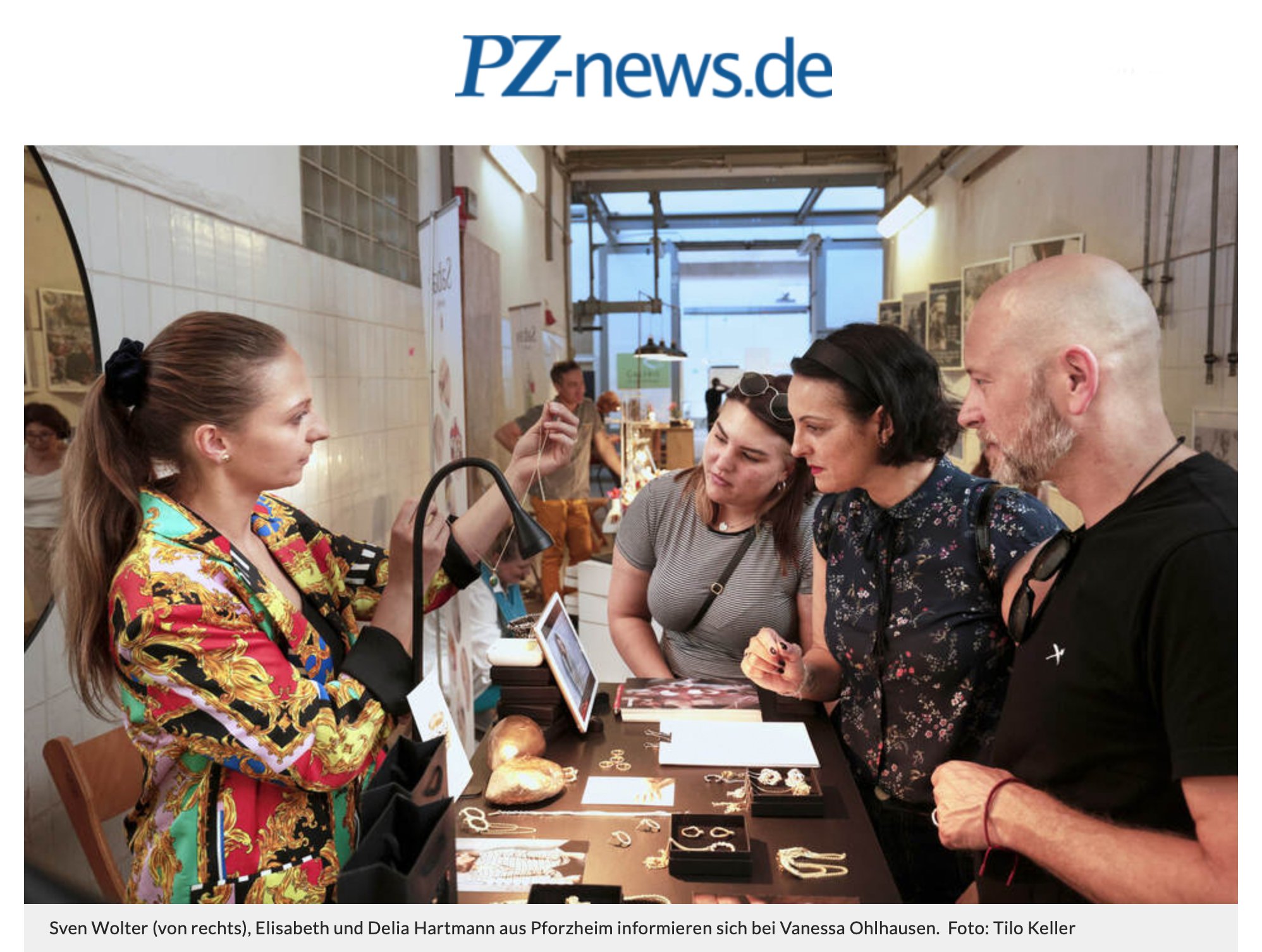PFORZHEIMER Zeitung
Pforzheim. Excited, intense conversations at the stands, saxophone sounds resound through the former industrial halls: On Saturday and Sunday, about 600 visitors roamed through the Old Slaughterhouse to see jewellery and objects from 42 exhibitors from Germany, Austria, France and Japan. The range of offerings extended from works made of paper and raw sand casting to plastic, precious stones and filigree silver plates, enamel bowls and aluminum bags.
"Relaxed atmosphere, a very interested audience, lively exchange of young and old," Mayer describes the atmosphere. (Michael Müller)
Schmuck Magazin
"High quality craftsmanship and design are a matter of honor here! Those who belong to the Jewellery Department of the Faculty of Design (DESIGN PF) at Pforzheim University have a reputation to defend. This department has been in existence in Pforzheim with all its predecessor institutions since 1877 - and is therefore one of the oldest, most traditional and renowned universities in the discipline of design in the German-speaking world. Decorating oneself is part of the essence of man. Jewellery also has the task of reflecting reality, creating identity and helping to shape life in a transfunctional way." (Petra Bäuerle)
"It is always about the combination of artistic and craftsmanship quality, which creates something new and can enchant the wearer of the jewelry". (Andreas Gut)
GZ Goldschmiede Zeitung
"Everything is in a flow with Vanessa Ohlhausen. The 23-year-old, who completed her Bachelor of Arts at the Pforzheim College of Design, called her thesis "Samsara". In Indian religions, the word stands for the perpetual cycle of being, the cycle of becoming and passing away. In Vanessa Ohlhausen's interpretation, the Far Eastern concept of wearable jewellery is derived from a subjective intuition. Initially the graduate draws her ideas on paper - with her eyes closed and both hands simultaneously. The reason: "Being blind frees me from identification with thoughts," she says, "I observe the voice in my head and concentrate on the moment. In the end, the drawing is the visible part that remains. Her pieces of jewelry, mostly pendants in bizarre endless shapes and with striking surfaces, are created in a similar way. Here it is iron wire, which is used to "draw" three-dimensionally, before the forms are given a look as if the flow or process has solidified in further work steps - in sand casting or raku firing. (Christel Trimborn)



